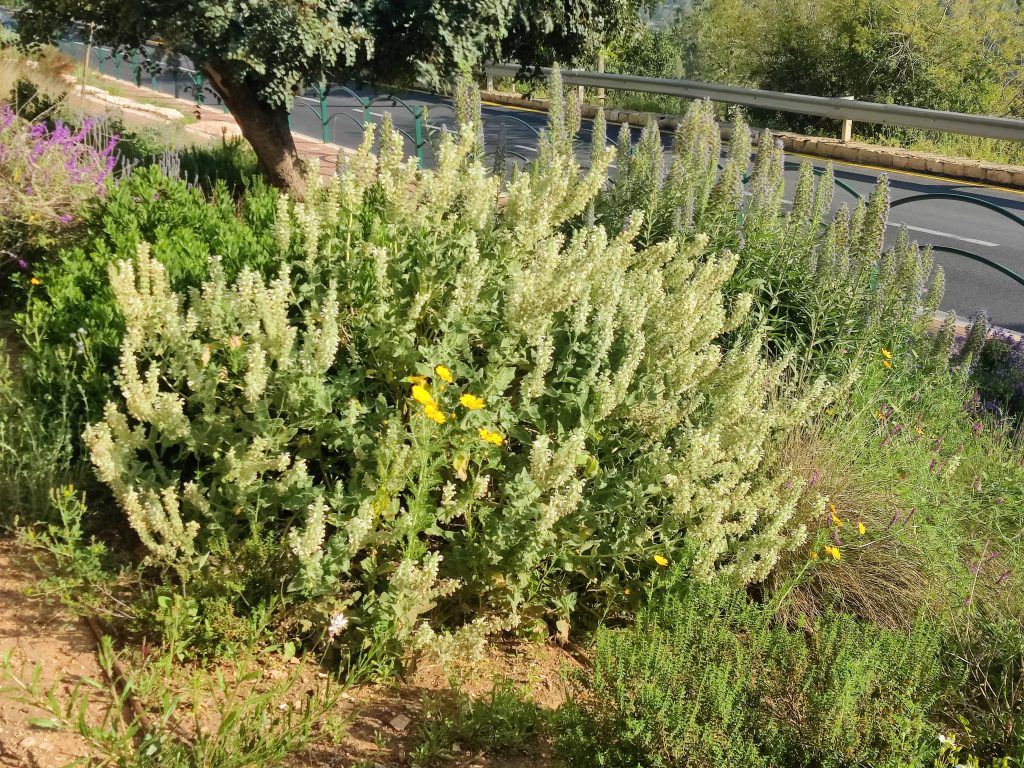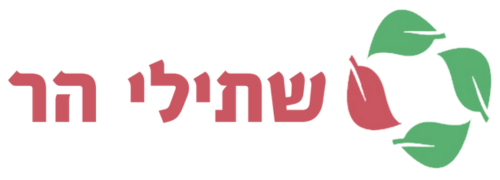
Salvia dominica – Dominica Sage
Family: Lamiacea | Origin: Eastern Mediterranean
Most wild sages in Israel are herbaceous perennials that grow low leaf rosettes in winter, bloom in winter or spring, and dry out completely in summer.
These sages have thick roots or rhizomes that remain underground from which the leaves and flowering stems are renewed in the rainy season.
Shrub sages are rare in our country, and one such that is very well-known is Salvia fruticosa (Marva Meshuleshet in Hebrew), which is used as a spice and infusion, but is seldom successful in private gardens due to its great sensitivity to summer irrigation.
Another shrub sage, which is not rare, but has only entered gardening in recent years, is Dominica Sage which is called in Hebrew Fragrant Sage.
It is an evergreen shrub with grayish, hairy leaves that emit a strong and pleasant scent with every gentle touch or even without any contact. In late winter and spring, it blooms profusely with flower stalks densely covered with white hairs and beautiful white flowers.

Dominica sage has proven to be an excellent plant for landscape restoration and public gardening due to its resistance to harsh conditions and neglect, but also to irrigation with good drainage.
It grows to be a shrub 50-80 cm high and a meter or more in diameter and can also be used as a medium shrub in the Mediterranean garden and in the wild garden among other shrubs and behind other low shrubs and plants. Like all sages, it attracts bees and butterflies.
The appearance of the plant in the height of summer, especially without watering, is less attractive, but with light pruning once every year or two to refresh and with proper care, this sage can add a special and beautiful winter-spring appearance and a pleasant fragrance to the garden.
The fragrant leaves were used in the past in folk medicine and can be used to brew a slightly bitter tea in small quantities.
Winter is the perfect season for planting fragrant sage and young plants are normally available with us in the winter months.
:We also wrote about
לחצו כאן לקריאה על מרווה ריחנית בעברית

